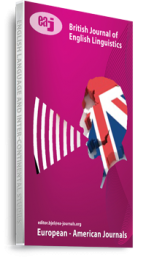Language is a vehicle through which people communicate with one another. The words and expressions people use to communicate with each other can either build relationships, act as a catalyst to commence conflict or fan the flames of an ongoing conflict. People do not usually find themselves in a conflict zone with persons to refer to them as “the other”. Social media brings people from around the globe to communicate but there is always a feeling of belonging that units these people in the social media speech community. This work examines the language of discrimination on social media by Cameroonians at the tribal, regional and gender levels. It looks at the language from the level of discursive vocabulary items used by Cameroonians on social media that can provoke feelings of discrimination towards one another. Data for this study comprised of some 50 WhatsApp and Facebook screenshots and some 25 questionnaires administered through random selection of users of the social media platforms under study. Using the theory of Critical Discourse Analysis by Norman Fairclough, (1995) and the discursive model of Language and Gender by Cameron (2005). The results reveal that 100% of the respondents agreed to the fact that there is the prevalence of the language of discrimination on social media in varying proportions at gender, regional and tribal level. 67% of those who have encountered such discrimination express that this can affect life out of social media, while the 33% of those who think it will not affect their lives put up several mechanisms to shield this effect like ignoring such posts, defending their kind or reproaching the author of the discriminatory post.
Keywords: Discrimination, Social media, tribalism

